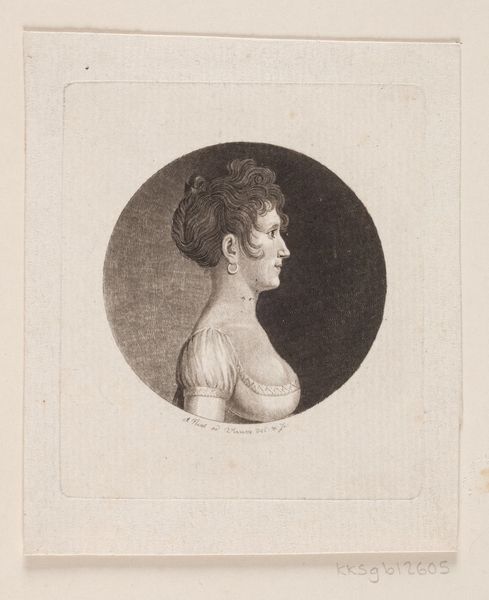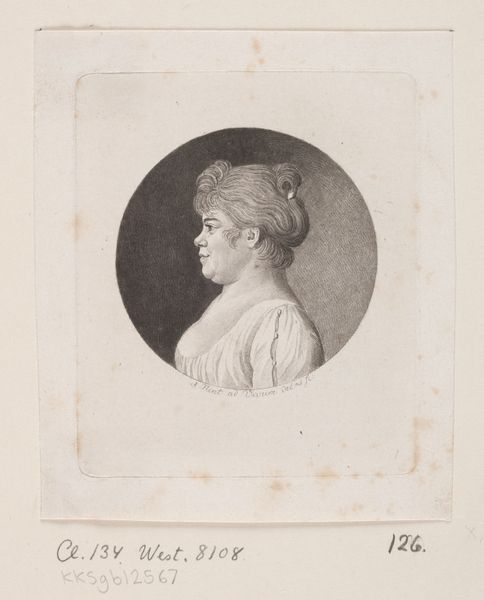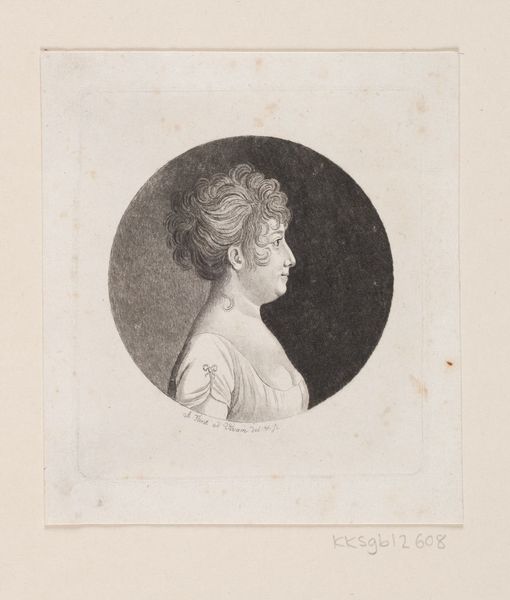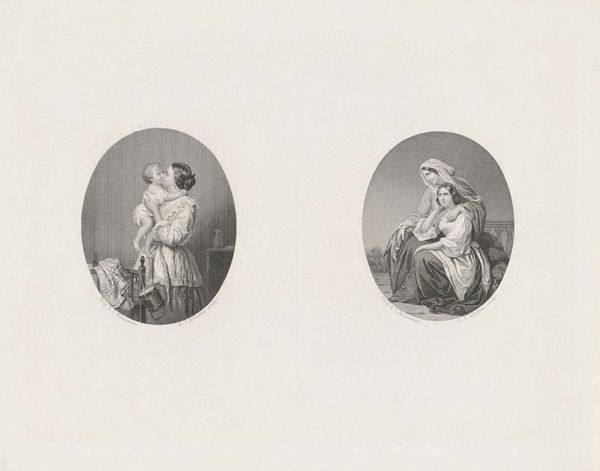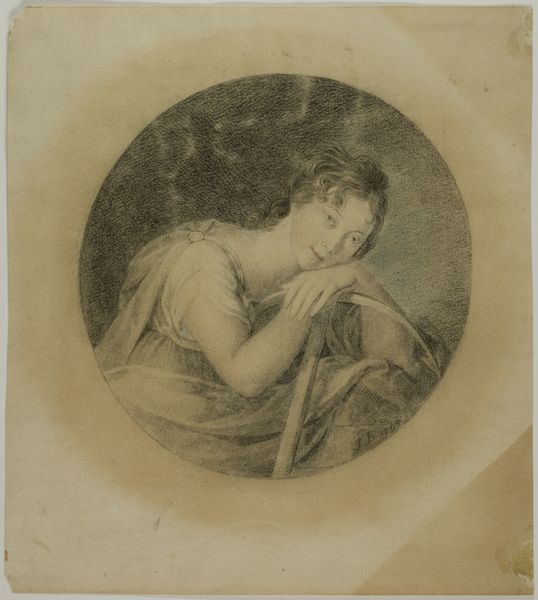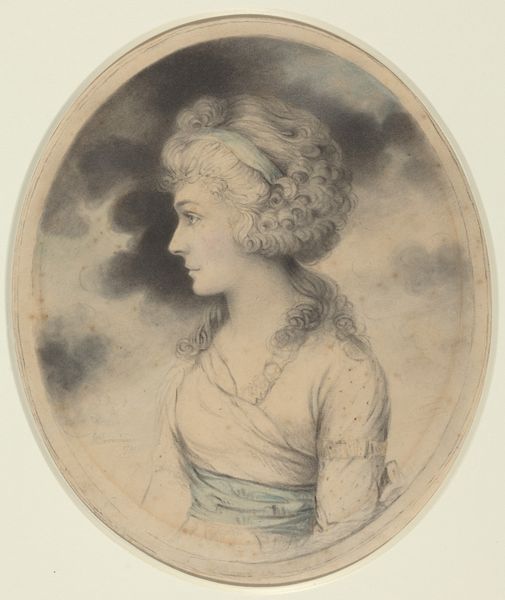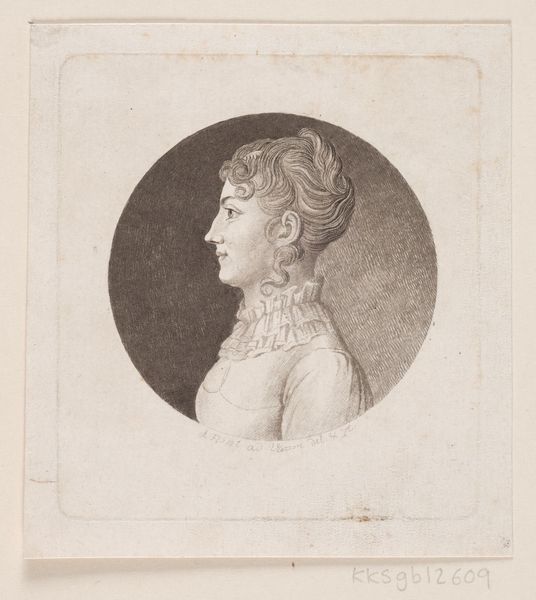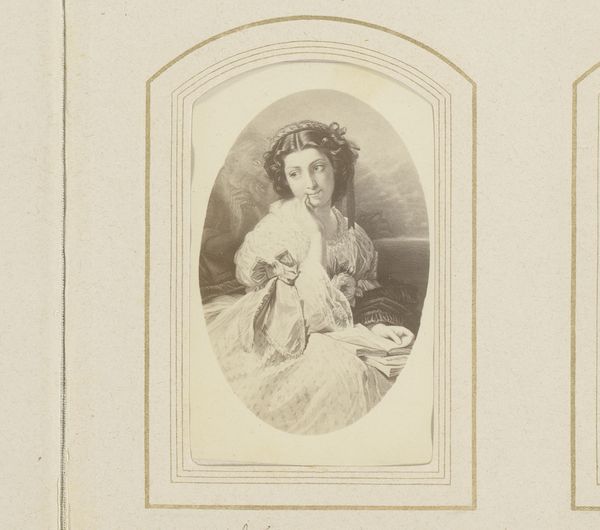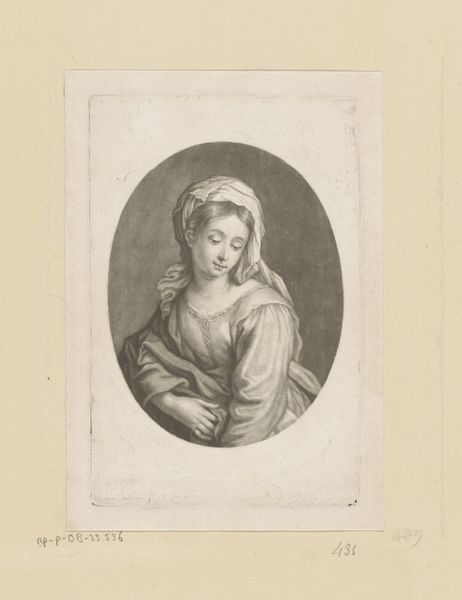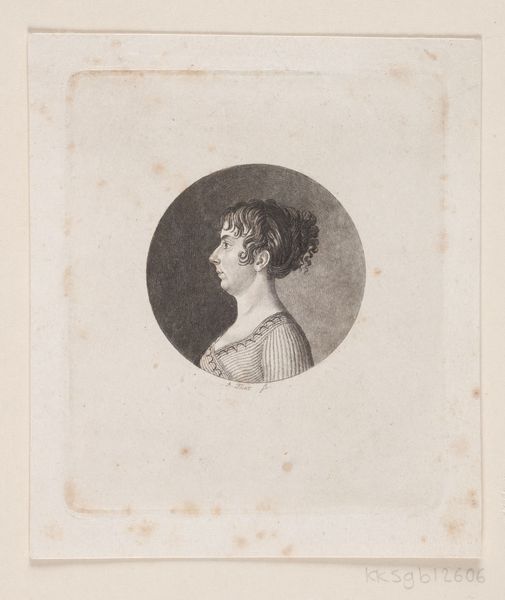
drawing, paper, charcoal
#
portrait
#
drawing
#
charcoal drawing
#
paper
#
romanticism
#
charcoal
Dimensions: height 82 mm, width 71 mm
Copyright: Rijks Museum: Open Domain
Editor: This is "Study of a Girl with a Hat, Turned Left," a charcoal drawing on paper by Johannes Christiaan Schotel, made sometime between 1797 and 1838. The monochrome palette gives it a muted, almost dreamlike quality. What strikes you when you look at this portrait? Curator: What I see is a potent symbol of the restricted roles afforded to women in the early 19th century. Consider the hat itself. While seemingly innocuous, it functions as a marker of respectability, subtly policing her image. How do you think this portrayal might relate to broader social expectations placed upon women during this time? Editor: That's interesting. I hadn't thought about the hat as a symbol of restriction. I was more focused on the face, trying to decipher her expression. It's hard to tell what she's thinking. Curator: Exactly! This ambiguity is key. Is she a passive subject, merely reflecting societal expectations, or is there a hint of defiance in her gaze? Schotel situates the woman within an inherently gendered context of his time. Perhaps this is more a rendering of constraint rather than just of beauty. How does her turned gaze affect the viewer’s interaction with the image? Editor: I guess it does keep us at a distance, preventing a more intimate connection. Curator: And this distance, I'd argue, highlights the social barriers between the subject and the world. She is present, yet inaccessible. Almost an archetype of female repression within emerging patriarchal structures. What can the formal portraiture style itself tell us about societal constructions of gender? Editor: This really changes my understanding. I initially saw it as just a pretty drawing, but now I see layers of social commentary. Thank you! Curator: The pleasure is mine. The true power of art lies in its capacity to spark precisely this kind of critical engagement with our shared history.
Comments
No comments
Be the first to comment and join the conversation on the ultimate creative platform.


